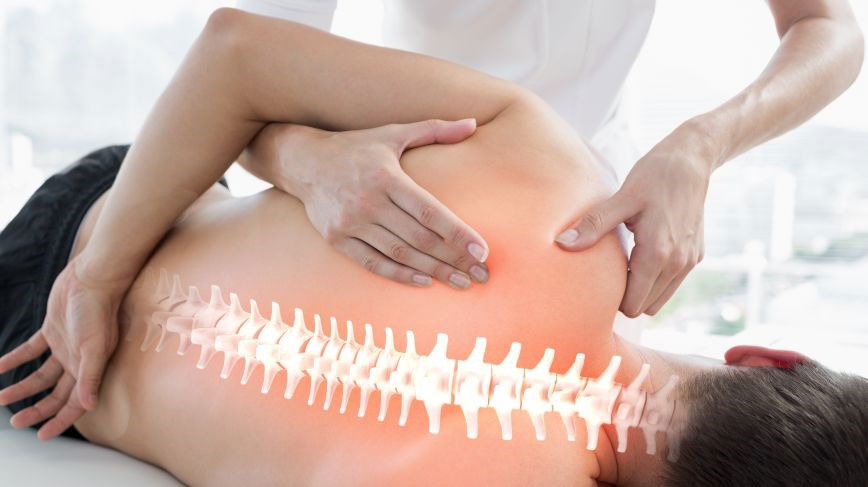What type of massage is best for you?
During my sessions I may use any number of these styles and techniques. It all depends on what sort of outcome you're after and what is best for you on the day.
Choosing the right therapist:
The right therapist will be a kind listener that has hands that aim to heal you, not rough you about. Although therapeutic massage can be intense at times, it should never cause immense pain. Because pain is not therapeutic.
If you have any concerns about massage therapy then the right therapist will have no problem listening and discussing these concerns with you.
The right therapist will make you feel good about yourself and make you want to come back!
Swedish / Relaxation
This is the style of massage that comes to mind when you're sitting at work then sigh and say "man, I could really go for a massage".
Typically its a variety of long flowing strokes to calm, kneading and wringing to address tension and percussion, like tapping, to stimulate the nervous system (yes, just like that cliche karate chopping you see in movies).
Swedish massage is slow, rhythmic and can be firm or very light to allow the nervous system to ease so you just melt away and let go of everything.
Relaxation is extremely beneficial and sometimes needed before any therapeutic work can take place.
Deep Tissue
Deep tissue doesn't just mean deeper pressure but getting into the deeper layers of tissue, especially for a therapeutic effect.
Deep tissue massage can be general, firmer pressure to ease tension or incorporate trigger point work and a bit of MFR.
Whatever is done it is never painful. Pain is the bodies way of telling you to avoid that thing. Instead, deeper pressure is obtained slowly and to a level of your comfort. That way the nervous system has the ability to adapt and let go.

Sports Massage
Sports massage can be specific to the type of sport you play and where you are in the stages of training. You wouldn't want a deep tissue massage or MFR a day before the big run, but you would benefit from some more vigorous Swedish massage. Or you might have a goal of increasing more flexibility and joint range, and maintain that regularly.

Therapeutic / Remedial
Therapeutic work is a journey. It's about making a change to the body or managing chronic conditions. It is the assessment and treatment of: back pain, headaches, whip lash, shoulder injuries, posture and more.
Typically posture and movement are assessed and a treatment goal is established. This is usually slow work, taking a number of sessions, especially if the condition has been present for a while.
It may be necessary to treat the pain first before attempting any work to adjust the cause of dysfunction. With some conditions progress can be slow and therefore patience is needed but usually even a little relief can be noticed after just one session.
Home-care in the form of rehab exercises or strengthening are given to aid in the recovery or management of conditions.

Trigger Point Therapy
There is much more to trigger points than what will be discussed here, but essentially trigger points are hyper irritable spots that when pressed make you go "ahh, yip, that's the spot."
These points are better known as "knots" and can be active, causing pain or discomfort within the tissue, sometimes with radiating sensations.
It takes a little more than just finding the right spot, though. A degree of finesse is used to engage the nervous system. It's not about breaking up knots as it is about the body unravelling it naturally.
Although a bit of discomfort is inevitable, trigger point therapy can be surprisingly relaxing.

MFR
Myofascial release is a type of massage that uses no oil in order to engage the connective tissue structures surrounding the muscles.
It feels like a stretch, is very slow work and quite relaxing.
Fascia is a watery, web of collagen and elastin that gives our muscles form, frictionless movement and spring like qualities (useful for walking).
Because fascia runs from the tips of our toes to the top of our head tension in one area can have far reaching effects. It is often necessary to address the fascial system when doing therapeutic work and to warm areas before deep tissue work.

Massage Techniques
Effleurage - Long flowing strokes with hands or forearms that help calm the nervous system.
Petrissage - Kneading, wringing and manipulating of tissues to increase blood flow, ease tension and basically make you feel good.
Tapotment - Hacking and flicking on skin or over draping to stimulate the nervous system.
Compression - Pin point pressure on tension spots to ease pain, stop referrals and release tension.
Vibration - Rapid pulsing, sometimes with moderate pressure, that calms muscles and trigger points.
Frictioning - A light or firm rubbing of tissues, typically at the attachment sights of muscles to stimulate the nerve endings in tendons to relax the muscle. Used often in trigger point therapy.
STT - Soft Tissue Techniques, a broad term for the techniques used to seperate, stretch, lengthen or tone muscle fibres. Sometimes passive or active movement of the muscle is used.
MET - Muscle Energy Technique. Developed by Osteo's to engage the muscle and nervous system to stretch or tone a muscle. A very gentle technique but effective in creating change.
PNF - Proprioceptive Neuromuscular Facilitation. Similar to MET but with more active engagement from the patient to stretch the muscle. Great to bring more awareness and feedback to inhibited muscles.
Mobilisation - Gentle movement and manipulation of the joint to encourage movement and free up soft tissue structures around it.